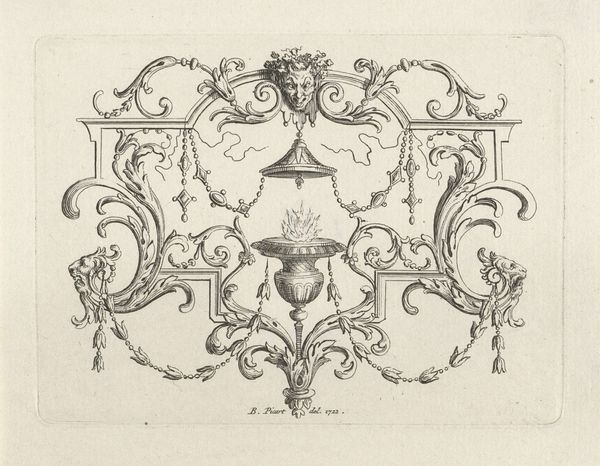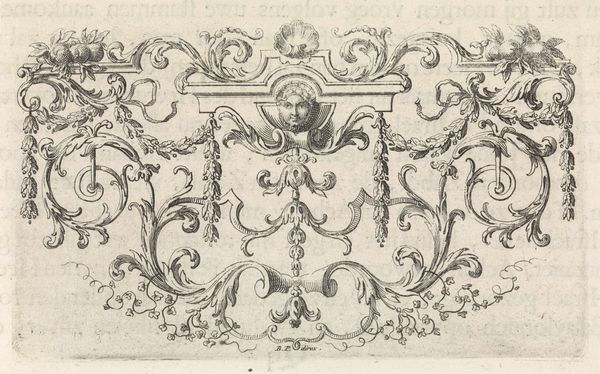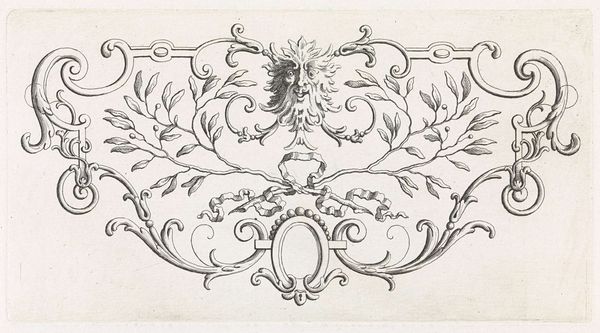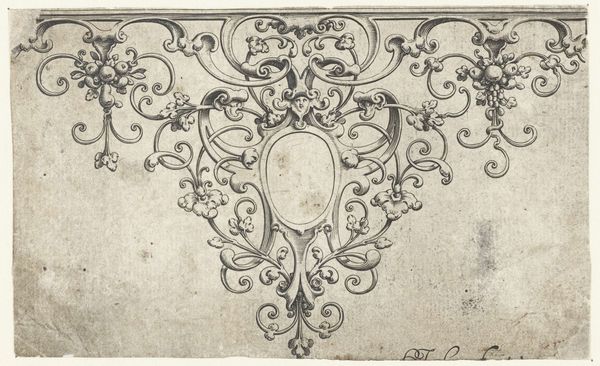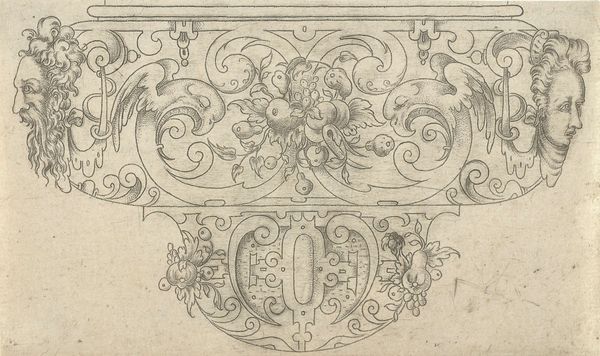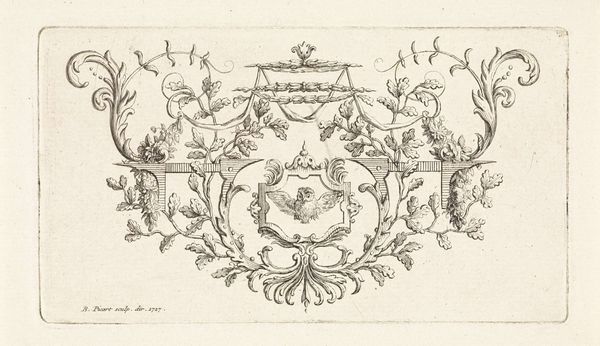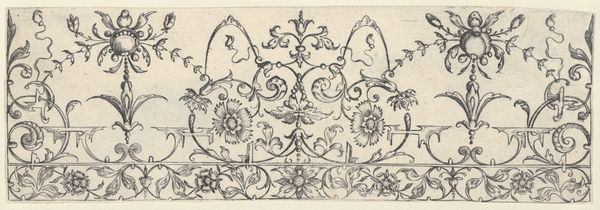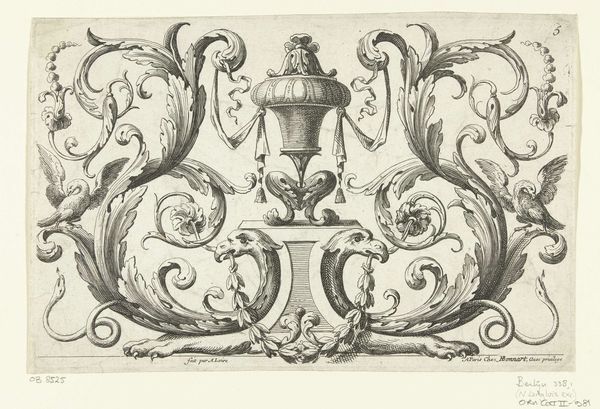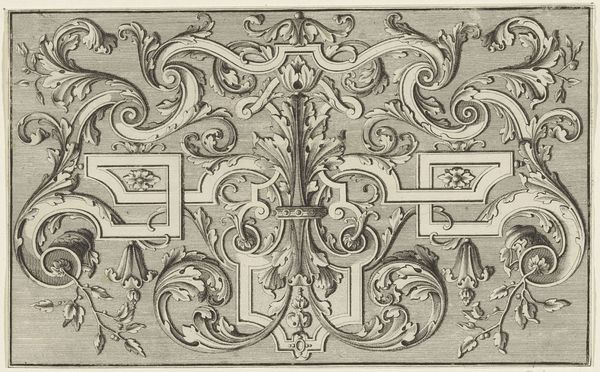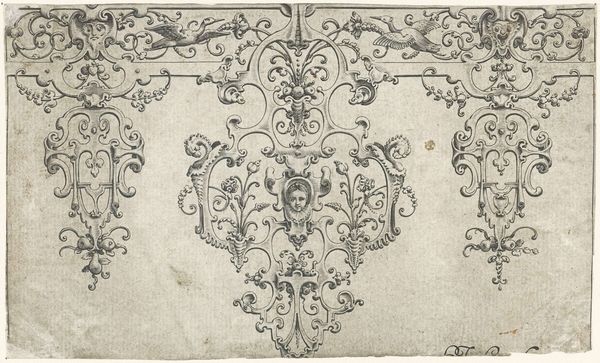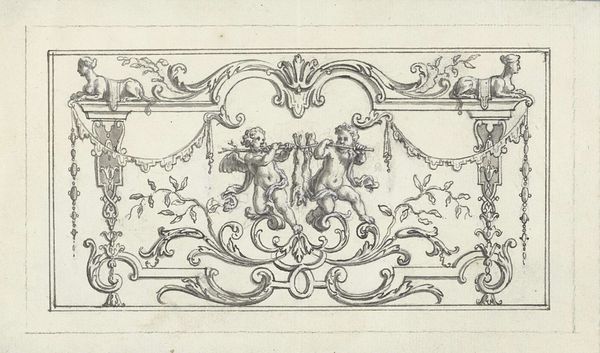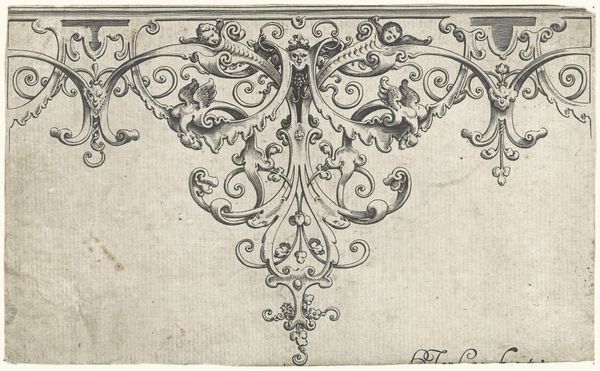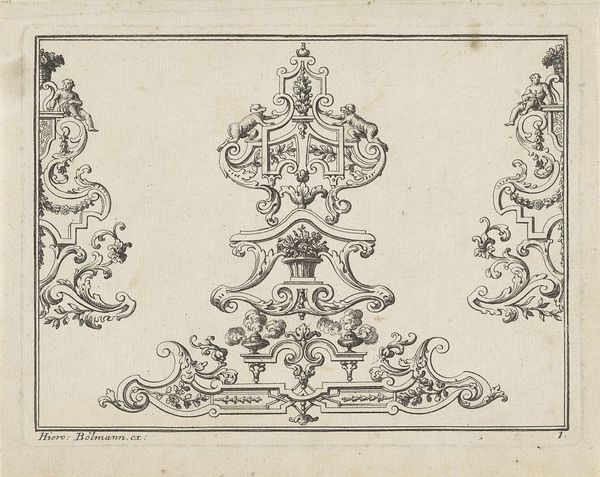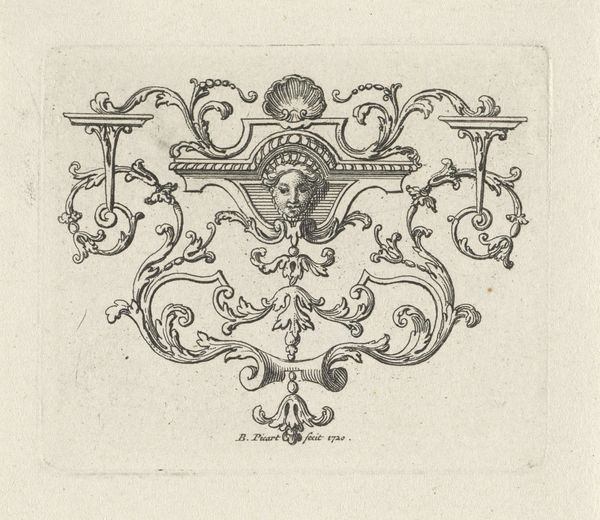
drawing, ink
#
drawing
#
baroque
#
form
#
ink
#
geometric
#
line
#
decorative-art
Dimensions: height 74 mm, width 100 mm
Copyright: Rijks Museum: Open Domain
Curator: Here we have Bernard Picart’s “Paneelvulling met brandende lamp,” or Panel Filling with Burning Lamp, from 1721. It’s currently held at the Rijksmuseum. My first impression is just how intricate the line work is. Editor: Intricate indeed! I'm immediately struck by the sheer amount of work involved in creating such a piece. You have to imagine Picart in his studio, the smell of ink in the air. What sort of societal function was Picart fulfilling when rendering something like this? Curator: This is a drawing made with ink. As a design for decorative art, the piece tells us a lot about the role of artisans and craftsmanship in early 18th-century Europe. Note how the symmetry and the swirling forms speak to Baroque aesthetics, though through line-work that flattens form in unique ways. Editor: Exactly, the labor here is also aesthetic, but how did this piece circulate? Was it strictly intended for paneling in elite homes or public spaces, or does it serve another function entirely? Were pieces such as this considered purely as functional or to reflect the commissioner's aspirations? Curator: It's interesting to consider its impact on contemporary makers too. Was this a solitary work of art, or a guide for collaborative work, with perhaps different hands producing each decorative element. Consider the context – was this for architectural adornment or was it intended for reproduction on a more accessible medium like tapestries for broader audiences. Editor: Absolutely, and even today we wrestle with high art versus functional design. I’d love to understand more about how workshops were organized around drawings like this. How much latitude did artisans have in interpreting Picart’s vision? It is as much a social commentary on hierarchy, as a standalone artwork. Curator: It definitely pushes us to think beyond individual genius and see art as embedded in larger systems of production, taste and material practices of labor itself. It also emphasizes the dynamic exchange between the decorative and the symbolic. Editor: Yes. This makes you wonder how artistic creations can represent social interactions and production techniques from previous historical periods. Curator: Indeed, a single panel design offers us insight into workshops and social contexts.
Comments
No comments
Be the first to comment and join the conversation on the ultimate creative platform.
